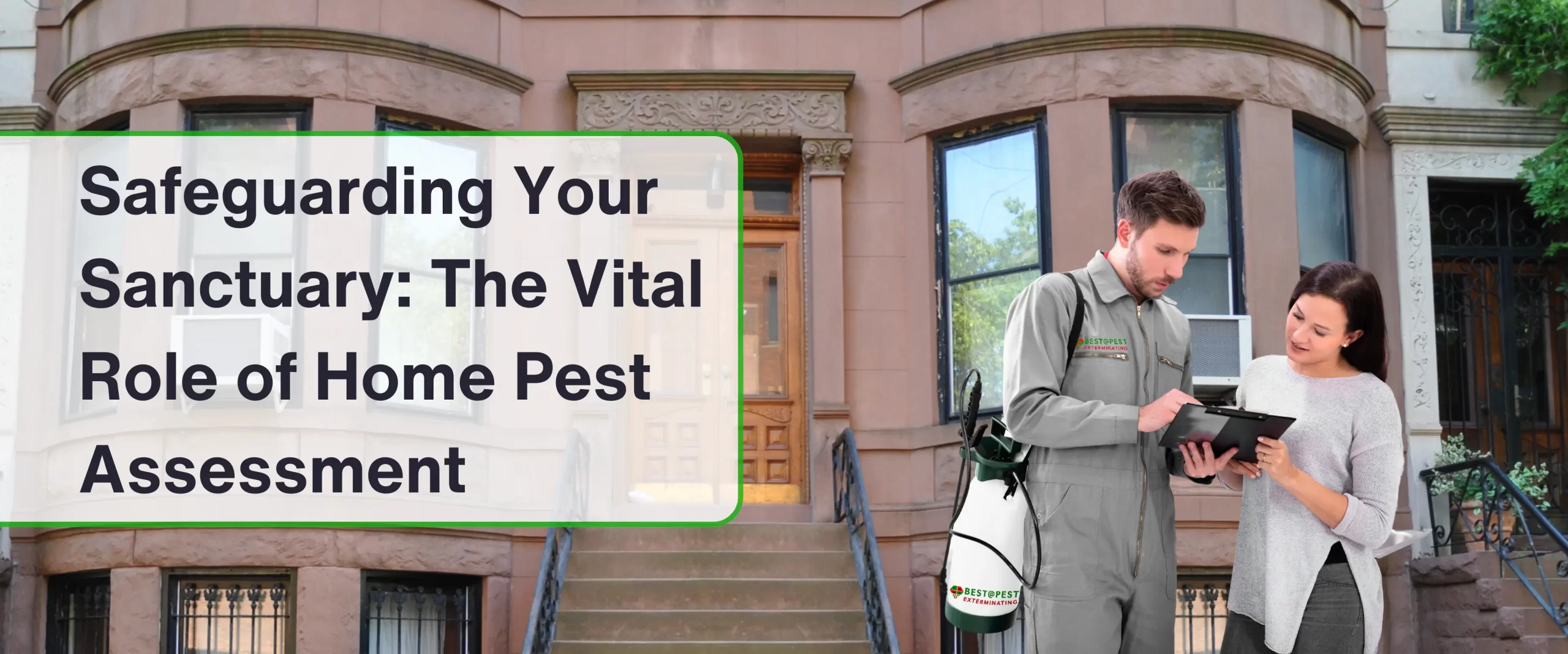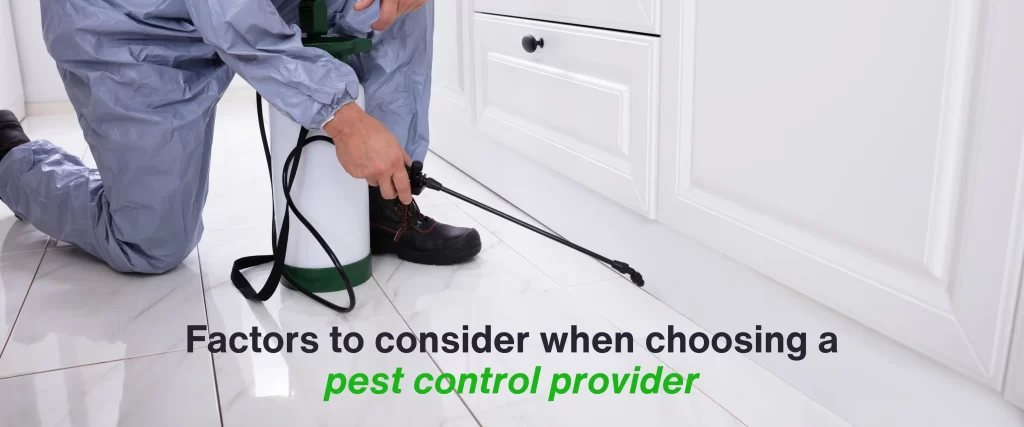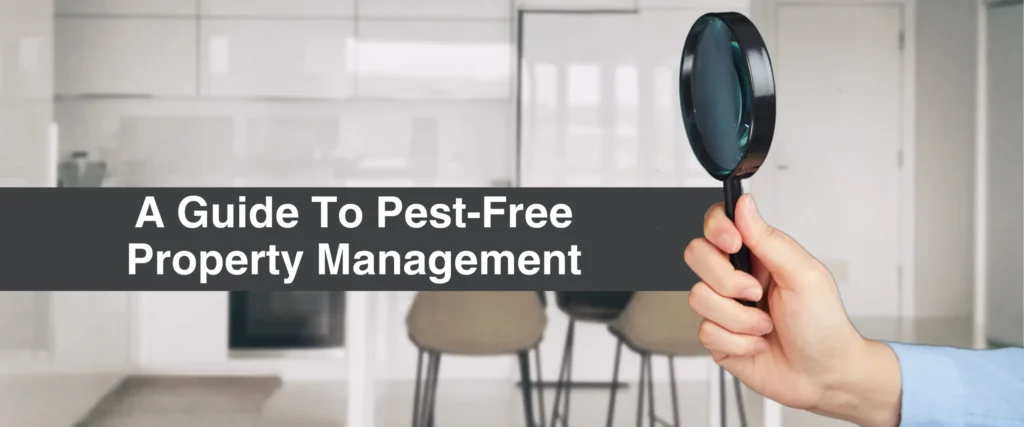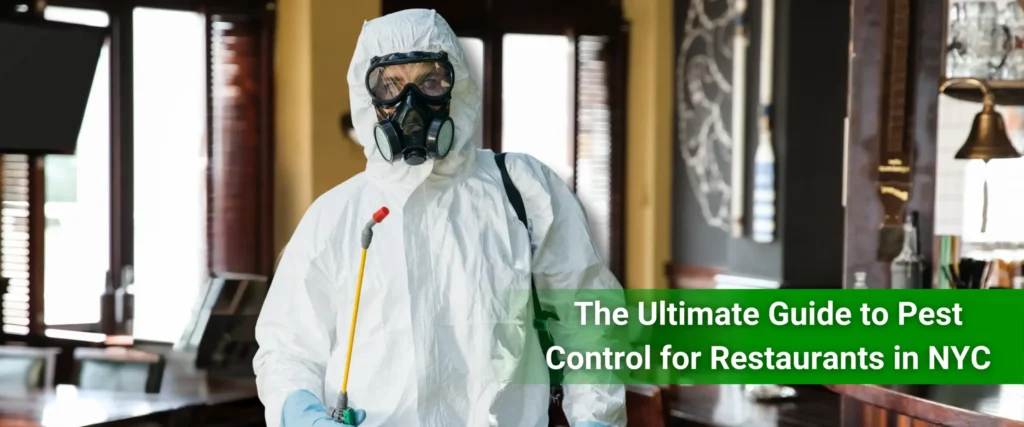
Safeguarding Your Sanctuary: The Vital Role of Home Pest Assessment
Sharing your home with loved ones is a joy, but what about creepy crawlies and furry freeloaders? Pests can quickly turn your haven into a hassle. But before you grab the bug spray, take a deep breath. A home pest assessment can be your secret weapon in the fight for a pest-free paradise.
This blog post will be your guide to understanding home pest assessments. We’ll explore the world of DIY inspections and the benefits of calling in a professional. We’ll equip you with the knowledge to identify potential pest problems and empower you to take control of your home environment.
Benefits of a Home Pest Assessment: Keeping Your Castle Creature-Free
A home pest assessment offers a wealth of advantages that go beyond simply identifying creepy crawlies. Here’s how pest control for property inspections can benefit you:
Prevention of Property Damage:
Early Detection, Early Intervention:
Pests, like termites and rodents, can wreak havoc on your property if left unchecked. A professional assessment can uncover these hidden threats before they cause significant structural damage. Think of it as catching a small leak before it becomes a flood in your walls!
Identifying Vulnerable Areas:
A trained inspector can pinpoint weaknesses in your home’s exterior that might be attractive entry points for pests. This allows you to seal cracks, trim overgrown vegetation, and address potential problems before they become expensive repairs.
Protection of Health and Well-Being:
Curbing Allergens and Diseases:
Many pests, like cockroaches and dust mites, can trigger allergies and asthma attacks. A pest assessment can help identify the culprits and recommend steps to eliminate them, creating a healthier living environment for you and your family.
Preventing the Spread of Pathogens:
Rodents and some insects can carry harmful bacteria and diseases. A professional assessment can minimize the risk of these pathogens entering your home, protecting your family’s health.
Cost Savings in the Long Run:
Proactive Approach Saves Money:
Catching a pest infestation early means smaller problems and easier solutions. This translates to lower treatment costs compared to waiting until the issue becomes a full-blown nightmare.
Avoiding Expensive Repairs:
As mentioned earlier, preventing pest damage to your property can save you significant money on repairs down the line. A small investment in a pest assessment can prevent a much larger expense later.
Peace of Mind for Homeowners:
Living Pest-Free:
There’s nothing quite like the peace of mind that comes with knowing your home is free of unwanted guests. A thorough assessment and any necessary treatment will ensure a pest-free environment, allowing you to relax and enjoy your home.
Informed Decisions:
A professional assessment provides a clear picture of the pest situation in your home. This empowers you to make informed decisions about treatment options and prevention strategies.
Conducting a Home Pest Assessment: Keeping Your Castle Critter-Free
Your home is your castle, and unwanted pests can quickly turn that castle into a creepy crawly warzone. But fear not, with the knowledge to conduct a thorough home pest assessment you can reclaim your domain.
DIY methods for initial assessment:
Not every pest problem requires a professional. Here’s how to be your own pest detective:
Become a Sherlock of Signs:
Inspect your home for clues left by unwanted guests. Droppings, chewed wires, shed skin, and even strange noises can all be indicators of a pest infestation.
Seal the Cracks:
Check for entry points around your foundation, windows, doors, and utility lines. Even tiny gaps can be an open invitation for pests.
Inspect the Pantry:
Pantry pests love dry goods. Look for signs of activity in your stored food, like gnaw marks on packaging or little crumb trails.
Hiring professional pest control services:
Sometimes, a DIY approach isn’t enough. Here’s when to call in the pest control pros:
The Infestation is Out of Control:
If you’re dealing with a large or persistent infestation, professional help is the most effective way to eradicate the problem.
Identifying the Culprit is a Mystery:
Not all pests are easily identifiable. Professionals have the expertise to diagnose the specific pest and recommend the most targeted treatment plan.
Peace of Mind is Priceless:
For some homeowners, the knowledge that a professional has assessed and treated their home is worth the investment.
Factors to consider when choosing a pest control provider:

Not all pest control companies are created equal. Here’s how to find the perfect partner in pest elimination:
Licensing and Insurance:
Make sure the company is licensed and insured in your area.
Experience and Expertise:
Look for a company with experience dealing with the specific type of pest you’re facing.
Treatment Methods:
Ask about the company’s treatment methods and ensure they prioritize safety for your family and pets.
Importance of regular inspections:
An ounce of prevention is worth a pound of cure (or should we say, a pound of poison!). Here’s why regular inspections are key:
Early Detection is Key:
Catching a pest problem early can prevent a full-blown infestation and save you money on treatment costs.
Maintaining a Pest-Free Zone:
Regular inspections help identify and address potential entry points before they become pest highways.
Peace of Mind Pays Off:
Knowing your home is protected from unwanted critters can give you peace of mind and allow you to relax and enjoy your castle.
Common Signs of Unwanted Guests

Our homes are meant to be sanctuaries, but unwanted visitors can quickly turn that feeling upside down. Pests, from creepy crawlies to furry scroungers, can not only be unsettling but also cause damage and spread disease.
Here’s a guide to some common pests and the telltale signs of their presence:
Rodents: Masters of Making Themselves at Home
Droppings:
Be on the lookout for small, pellet-shaped droppings, especially in areas like cupboards, pantries, and behind furniture.
Gnaw Marks:
Rodents love to chew. Check for gnaw marks on food packaging, furniture legs, wires, and even walls.
Scratching Noises:
As nocturnal creatures, rats and mice tend to be most active at night. If you hear scratching or scurrying sounds coming from within your walls or attic, it might be a sign of unwelcome residents.
Insects: Tiny But Troublesome
Bites:
Insect bites can be itchy, red, and uncomfortable. If you wake up with unexplained bites, it could be a sign of bed bugs, mosquitoes, or other biting insects.
Nests:
From cobwebs in the corner to piles of sawdust near doorways, the presence of nests can indicate an insect infestation.
Visible Presence:
Seeing live insects, dead insect bodies, or even shed insect exoskeletons is a clear sign that you’re not alone.
Termites: The Silent Destroyers
Damaged Wood:
Termites feed on wood, so weakened floorboards, crumbling furniture, or hollow-sounding walls could be a sign of termite damage.
Mud Tubes:
These pencil-sized tunnels made of mud are a telltale sign of subterranean termites. They build these tubes to travel between their nest and food source (your house!).
Discarded Wings:
After swarming to find a new nesting site, termites shed their wings. Finding piles of tiny wings near windows or doors could indicate a termite infestation.
Other Common Pests: Keeping an Eye Out
This category encompasses a variety of unwelcome guests, including:
Ants:
Look for trails of ants, especially near food sources.
Cockroaches:
These nocturnal insects often leave droppings that resemble coffee grounds. They may also emit a musty odor.
Spiders:
While some spiders are beneficial, a large number of webs could indicate a pest problem.
Tips for Maintaining a Pest-Free Home
Pests can be a real nuisance, not to mention a health hazard. By following a few simple strategies, you can create a home that’s uninviting to creepy crawlies and unwanted critters. Here’s a breakdown of key areas to focus on:
Proper Sanitation Practices:
Cleanliness is key:
Regularly sweep, mop, and vacuum your floors. Crumbs, spills, and debris attract pests looking for a tasty snack.
Don’t leave food sources out:
Store food in airtight containers and keep surfaces free of clutter. Dirty dishes and overflowing trash cans are like neon signs for pests.
Take out the trash regularly:
Don’t let overflowing bins become a buffet for unwelcome guests.
Wipe down surfaces:
Don’t let crumbs and grime build up on countertops, appliances, and in the kitchen sink.
Pay attention to moisture:
Fix leaky faucets and pipes promptly. Excess moisture attracts moisture-loving pests like roaches and millipedes.
Regular Maintenance of the Home’s Exterior:
Trim trees and bushes:
Keep branches and foliage away from your house. This eliminates easy access points for climbing pests and reduces shady areas attractive to critters.
Store firewood away from the house:
Firewood piles can provide harborage for a variety of insects and rodents. Keep them neatly stacked at least several feet away from the exterior walls.
Address yard debris:
Don’t let leaves, branches, and other yard waste accumulate around your foundation. This creates a haven for pests and increases humidity which can attract unwanted visitors.
Clean up after your pets:
Pet waste attracts flies and other insects. Pick up after your furry companions promptly.
Sealing Entry Points and Cracks:
Caulk it up:
Seal cracks and gaps around windows, doors, foundations, and utility entry points. Even tiny openings can be an entryway for determined pests.
Inspect screens:
Check window and door screens for holes or tears and repair them promptly. Intact screens are a great first line of defense against flying insects.
Consider weather stripping:
Adding weather stripping around doors and windows can further prevent unwanted entry.
Don’t forget the pipes:
Seal gaps around pipes where they enter the house. This can be a common entry point for rodents.
Using Preventive Measures Such as Traps and Baits:
Strategic traps:
Set traps in areas where you’ve seen pest activity. There are traps designed for specific pests, so choose the right tool for the job.
Bait strategically:
Use baits in targeted locations following the manufacturer’s instructions carefully. Be mindful of pets and children when using baits.
Natural repellents:
Consider using natural repellents like peppermint oil or diatomaceous earth in areas frequented by pests (always check safety information for pets and children).
Conclusion
Prioritizing home pest assessment is paramount for safeguarding your sanctuary against the threat of infestations. By understanding, conducting, and maintaining regular assessments, homeowners can ensure a pest-free environment, protecting their property, health, and peace of mind. Take action today to schedule a pest assessment and take proactive steps towards a safer and healthier home environment.


